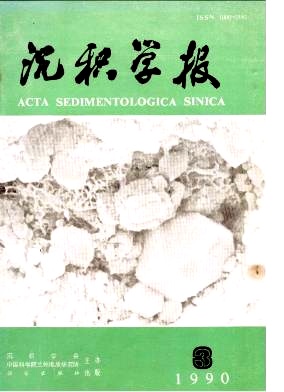THE GENETIC TYPES AND ASSOCIATION EVOLUTION OF DEEP LACUSTRINE FACIES MUDSTONES
- Received Date: 1990-04-19
- Publish Date: 1990-09-10
Abstract: The deep lacustrine mudstones are the important source rocks, and the significant evidence ofreconstructing evolutional history of basin and tracing the associated reservoirs as well. In recent ten years,the abundant information contained in deep lacustrine mudstones has been revealed more and more with thedevelopment of science and technology. It is actual necessary to research ;md use the information included inmudstones and form the sysmetric theory directing practice. The research of the lacustrine mudstones in Doug Ying Basin of Bohm Gulf area indicates that the deeplacustrine mudstones comprise at least eight lithofacieses: black shale, calcareous sliced shale, calcareouslaminated shale, homogenerous massive mudstone, graded laminated mudstone, mhomogenerous massivemudstone, chaotic mudstone and deformed mudstone. These rnudstone facieses assemble two categories on the basis of self-generating characteristics, 1. e.autogenic mudstones, including black sliced shale, calcarous sliced shale, calcarous laminated shale andhomogenerous massive mudstone; allogenous mudstones, including graded laminated mudstone,inhomogenerous massive mudstone, chaotic mudstone and deformed mudstone. There are significant differences in six aspects between autogenic mudstones and allogenousmudstones, such as petrologic physics, organic geochemistry, inorganic geochemistry, mineralogic con-stituent, palaeontologic association and geophysics. The autogenic mudstones fully reflect the characteristicsof deep lake, whereas the features of allogenous mudstones show that they are exotic to their depositionalenmronments. The genetic characteristics of two types of mudstones indicate that eight lithotypes can be divided intothree groups according to their genetic processes. The lithofaeieses in the same group are closely related toeach other nn origin, but they are formed in the different evolutional stages of the lake. Therefore, theabove- mentioned two categories of mudstones comprise three genetic serieses: lake- controllingmudstones, fiow-controlling mudstones and slumping mudstones. The lake-controlling mudstones wereformed by slow grain-by-grain vertical accretion of fine-grained suspended particles. The direct originwhich resulted in the different lithotypes was change of lake water nature. The autogenic mudstone, blackshale and calcareous sliced shale, calcareous laminated shale, homogen}rous massive mudstone, wereformed successively as the lake was changed from permanent stratified lake, seasonal stratified lake withbottom anoxic e..vironment into fully mixed aerobic lake. The flow- controlling mudstones consist ofturbidity mudsetones and debris flow mudstone. The former comprise graded laminated mudstone which is the products of turminal stage of sandy tarbidite and inhomogenerous massive mudstone formed by floodturbldity current rich in mud or by redeposition of unconsolidated muddy deposits in the shallow lake. Thegraded laminated mudstone commonly show four types of sequences similar to marine classical muddyturbidite. Debris current mudstone series is chaotic mudstones introduced by redeposition of comsolidaled orsemlconsolidated mudstones. The slumping mudstone series is mostly deformed mudstone initiated by slide orclamp. The association patterns of deep lacustrine mudstones of above-mentioned three genetic types dependon the different evolutional stages and palaeotopography of the basin. The starved stage of the basin wascharacterized by interbeded black shale and calcareous laminated shale with local mud turbidn:es (prevailingmhomogenerous massive mudstone),covering an extensive area. Association of homoge}aerous massivemudstone with mud turbidite (prevailing graded laminated mudstone) and debris flow mur3stone occurredin setting-compensation equilibrium stage of the basin. In the over-compensatron stage o(' the basin, thelithofaeieses introduced by gravity tlows gradually increased because the basinal slope background wasFormed. During this period slumping mudstone series was of wide distribution.
| Citation: | Deng Hongwen, Qian Kai. THE GENETIC TYPES AND ASSOCIATION EVOLUTION OF DEEP LACUSTRINE FACIES MUDSTONES[J]. Acta Sedimentologica Sinica, 1990, 8(3): 1-21. |






 DownLoad:
DownLoad: